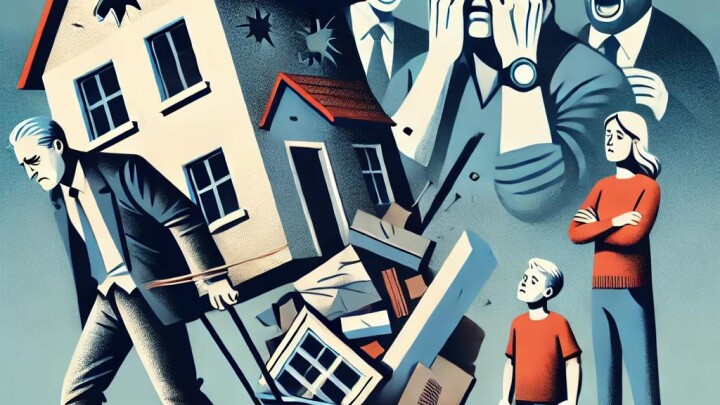What are hidden defects in a property?
Imagine that you have finally purchased the house of your dreams. Everything seems perfect until, months later, you begin to notice problems that were not visible at first glance: a leak that appears with the rains, the electrical system that fails intermittently or cracks in the walls that suggest structural problems. These problems, known as hidden defects, can turn your dream home into a source of stress and unexpected expenses. Understanding what they are and how to deal with them is crucial to protecting your investment and ensuring the livability of your home.
What are hidden defects?
Hidden defects in a home are irregularities or flaws present in the property that are not apparent to the naked eye. These problems are usually revealed after the property has been inhabited for some time. Legally, these defects are known as redhibitory defects. In simple terms, they are anomalies that are present in the property but are not easily noticeable, such as structural problems, water leaks or deficiencies in the electrical system.
Article 1484 of the Civil Code establishes that the seller is responsible for correcting hidden irregularities in the property sold if they compromise its proper functioning or reduce its usefulness in such a way that, if the buyer had been aware of them, he would have declined the purchase or would have offered a lower amount. This means that the finding of a hidden defect in a used property is evidence that the property does not meet the specifications that the seller provided to you prior to the sale.
The importance of identifying hidden defects
Detecting hidden defects is essential because these significant flaws can hinder the full enjoyment of your home. Problems such as water leaks can cause major damage over time, while deficiencies in the electrical system can pose a safety risk. It is critical to know these details in order to make informed decisions and avoid unpleasant surprises after the purchase.
Examples of Hidden Defects
Hidden defects in a home cover a wide range of defects that, although not visible at first glance, are present before the purchase. These problems are especially common in second-hand properties. Below are some examples:
Hidden Electrical Problems 2.
In older homes, the electrical system may be deteriorated, which over time generates problems and failures in switches or lights. These types of failures are not only annoying, but can also pose a significant safety risk.
2. Water problems
Leaks and damaged pipes are typical examples of water-related problems. These problems are usually caused by moisture, which may initially go unnoticed but can eventually cause serious damage to the structure of the home.
3. Foundation Problems
If a home has a faulty foundation, it can develop cracks and leaks. These problems can also be the result of a poorly executed renovation. In our guide, you can find information on how much it costs to renovate an apartment, as well as the types and approximate prices of building permits. We also recommend the best rated renovation companies in Madrid.
4. Defects in the Finishes
Some defects can be hidden with paint or poor lighting. These problems are usually found in the floor, walls and furniture such as shelves. These defects are usually the result of the use of low quality materials or a bad use of them, causing dampness and leaks, among other problems.
5. Thermal and Acoustic Insulation Problems
Poor insulation, either due to the lack of thermal bridge treatment or the use of inadequate materials, can cause noise and temperature problems. These problems usually become evident only after living in the house.
Don't let hidden defects ruin your latest investment or your new home. With the right guidance and support, and a Hidden Defects Report, you can protect your rights and ensure that the seller fulfills his responsibilities.
If you suspect your home has hidden defects, act quickly and seek professional advice. For more information and personalized assistance, contact us and do not wait for the legal claim period to pass.

Miguel S. Moreira
Miguel is a trained architect and building engineer with a ample experience in the real estate sector. He is the co-founder of Valido Home and loves to inform about the risks involved in purchasing property in Spain.




